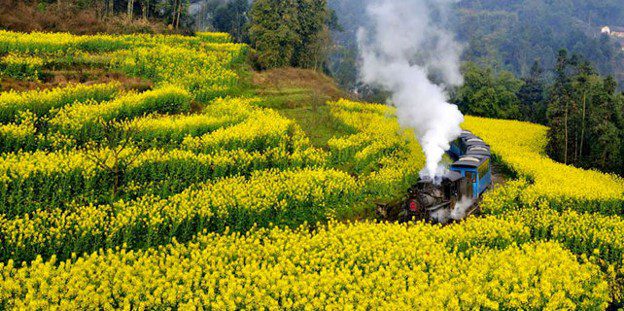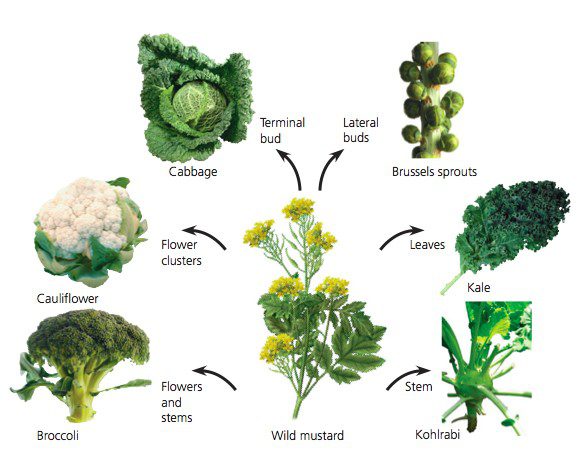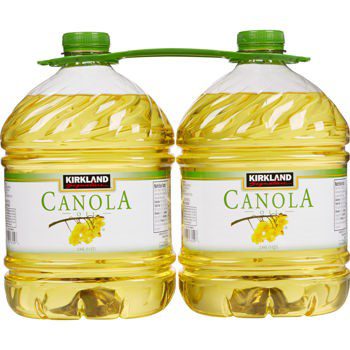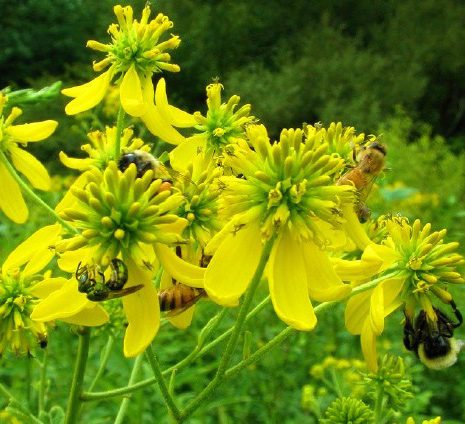Wild Mustard
Our wild Mustard is very unique; you cannot obtain anything like it anywhere else.
It starts growing before the last frost of spring, it is resistant to killer frost if one should one occur. It will flower very early in the spring before your Mason Bees emerge. Our seed mix consists of three varieties of wild mustard, each blooming a week or so later, than its predecessors.
What does this mean to your mason bees? When they hatch they have been without food for 6 months. They need ASAP, a reliable food supply, to recharge their body’s fat reserves, if they cannot find it within a few days, inside 100 yards of the nest, they will wander off and die!
Secondarily your mason bees need a bridge between the blossoming time of each variety of fruit trees or flowers they are feeding upon. For instance, your plum tree will bloom for two weeks in mid-April and the apple trees will not begin to bloom for three more weeks. There is a week-long famine, in-between, which is a very long time for a pollinator that lives for 8-weeks.
Rocky Pond Mustard is designed to compensate for both situations.
One more thing our mustard seeds are not an annual variety, that needs to be replanted every year it is a perennial mix, they will grow back each year.
The best time to plant your mustard seeds is in the fall. Plant on moist soil in mid-September. Press into the soil. Or plant in spring before last frost.
There is no better flower for Mason bees than wild mustard. Notice I said wild mustard. Wild mustard is organically grown, pesticide-free, the seeds are not coated, or treated. Mason bees will abandon the field if seeds are treated.
Wild mustard is abundant in pollen and nectar to feed your Mason bees. Mason Bees love wild mustard. It has an open flower design, great for mason bees. It’s an early bloomer, you plant it before the last frost, and it continues to bloom for up to a month. If you plant two crops, two weeks apart, you’ve fed your mason bees for their entire lives.
A field of wild mustard is gorgeous.

Wild Mustard will feed your mason bees and you.
The leaves are scrumptious and can be eaten raw or cooked like spinach. Wild Mustard is 25% protein and high in vitamins and minerals and has anti-inflammatory properties. The leaves can be dried as can the young stems and put in soups and stews or as a lively addition to eggs. Wild mustard is one way to get nutrients during the winter. The flower petals are a colorful addition to salads. The bright yellow color remains after they are dried. They can be sprinkled on potato’s, eggs and used as saffron. When the seeds are dried and ground, they produce a pepper-like spice. The whole seed can be used when making pickles and relish. Adding cold water to the ground or crushed seed makes it hotter than it already is.
Wild Mustard can heal you.
When crushed or ground and the seeds are mixed with a small amount of water, making a paste. This paste can be applied to a flannel or cotton cloth and placed cloth down-herb up on the chest, sore joints or anywhere there is swelling and pain. Mustard plasters were once the standard treatment for chest colds and croup. Mustard can be used to reduce the pain of headaches and migraines when taken as a tea. Mustard vapors, made by putting a few teaspoons of ground Mustard seed in a bowl, pouring hot water over it, and placing your face over the bowl with a towel to keep in the steam is helpful in clearing sinuses. Keep your eyes closed, as the vapors can annoy delicate eye tissues.
All of the plants below are bred from wild mustard plants.

If you have a press, the seeds will yield an edible and burnable oil.

Mustard will also feed your soil.

Turn under your wild mustard plants and they feed your soils. Green manure is a plant that has a quick growing period that is turned back into the soil to enrich it and to create a better-balanced soil.
And don’t forget your diesel pickup.
Recent research has studied varieties of mustards with high oil contents for use in the production of biodiesel. The biodiesel made from mustard oil has good flow properties and octane ratings. The leftover meal after pressing out the oil has also been found to be an effective organic pesticide.
Mustard is also resistant to many common pests.
Wild Mustard is a win for your Mason bees, for you and the environment.
One last story about wild mustard. In the early days of California the Spanish missions where often a hundred miles apart, across grasslands that were easy to get lost in. The earliest mission padre dropped wild mustard seeds as they walked, creating a proverbial yellow brick road to follow.

